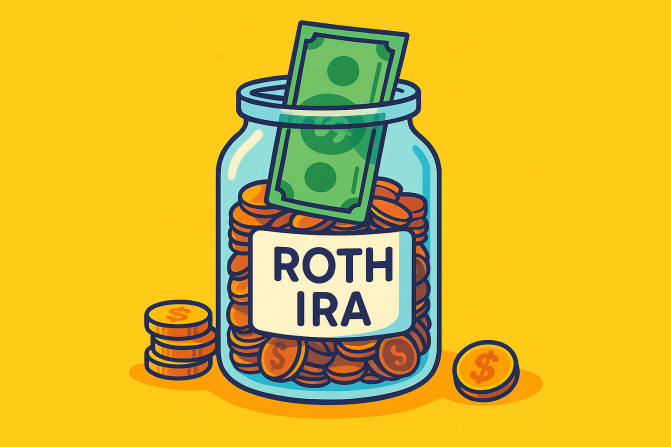
When most people think about retirement savings, they picture adults in the thick of their careers—not teenagers scooping ice cream, mowing lawns, or interning at their favorite wealth management firm. But the truth is, one of the most powerful financial moves a young person can make is opening a Roth IRA as soon as they begin earning income.
Time Is the Greatest Advantage
Thanks to compound growth, even a small investment made in the teenage years can grow substantially by retirement. For example, if a 16-year-old contributes $2,000 to a Roth IRA and never adds another dollar, that account could potentially grow to more than $100,000 by the time they retire—assuming a 7% annual return. The earlier you start, the longer the money has to grow—and in a Roth IRA, that growth is tax-free.
Tax-Free Growth and Withdrawals
Roth IRAs are funded with after-tax dollars, so while there's no immediate tax break, the long-term benefits are significant. As long as the account has been open for five years and the owner is at least 59½, withdrawals—both contributions and investment earnings—are completely tax-free.
Building Financial Skills Early
Opening a Roth IRA can be a hands-on lesson in saving, investing, and long-term planning. It’s a great way to introduce the concepts of compound interest, market growth, and financial responsibility in a way that is real—not just theoretical.
Flexibility When Life Happens
While Roth IRAs are meant for retirement, they offer some flexibility for life’s big moments:
- Contributions (but not earnings) can be withdrawn anytime without taxes or penalties.
- Some exceptions allow early access to earnings—such as for qualified education expenses or up to $10,000 toward a first home.
Who Can Contribute?
To open a Roth IRA, a child must have earned income—this includes wages from a summer job, babysitting, lawn care, or freelance work. For 2025, the maximum contribution is the lesser of the child’s earned income or $7,000.
Even if the teen wants to use their earnings for other needs, parents or relatives can make the Roth IRA contribution as long as the child earned that amount. For instance, if your child earns $2,000 over the summer, a parent or grandparent can fund the Roth IRA while the child keeps their paycheck.
Additional Things to Keep in Mind
- Starting in 2024, families may be able to roll unused 529 plan funds into a Roth IRA (up to $7,000 per year, with a $35,000 lifetime max), if the 529 has been open for at least 15 years. There are other specific rules around this—we’re happy to walk you through them if you have unused 529 funds.
- If the child is under 18 (in a few states, 21), a custodial Roth IRA must be set up by a parent or guardian. Once the child reaches the age of majority, the account becomes theirs.
- If the income is informal (like babysitting), make sure to keep good records in case verification is needed with the IRS.
Final Thoughts
Starting a Roth IRA for a working teen is a meaningful step toward lifelong financial independence. It’s never too early to start building smart habits and future flexibility.
At Evermay, we’re here to help your children or grandchildren get on the right financial path. Whether it’s opening an account, exploring contribution strategies, or simply learning more, we’d be glad to help.
Let us know when you’re ready to take the first step towards a Richer Life.
Important Disclosure Information
Evermay Wealth Management, LLC (“Evermay”) is a registered investment adviser. For more information about Evermay’s advisory services, please request a free copy of our Firm Brochure.
Past performance is no guarantee of future results. All investments involve risk, including loss of the principal amount invested. Diversification and asset allocation strategies do not ensure a profit and do not protect against a loss, especially during periods of market downturns.
This information is educational in nature, and not as a recommendation of any particular investment strategy. Given various factors, including changing market conditions, the views and opinions expressed are subject to change.
Statements herein reflect opinions regarding future financial or economic performance. Such statements are “forward-looking statements” based on various assumptions, which may not prove to be correct. Certain information contained herein was derived from third party sources as indicated. While the information presented herein is believed to be reliable, no representation or warranty is made concerning the accuracy of the information presented.
Please contact Evermay if there have been any changes to your financial situation or investment goals or if you would like to add or modify any reasonable restrictions to your investment portfolio.
